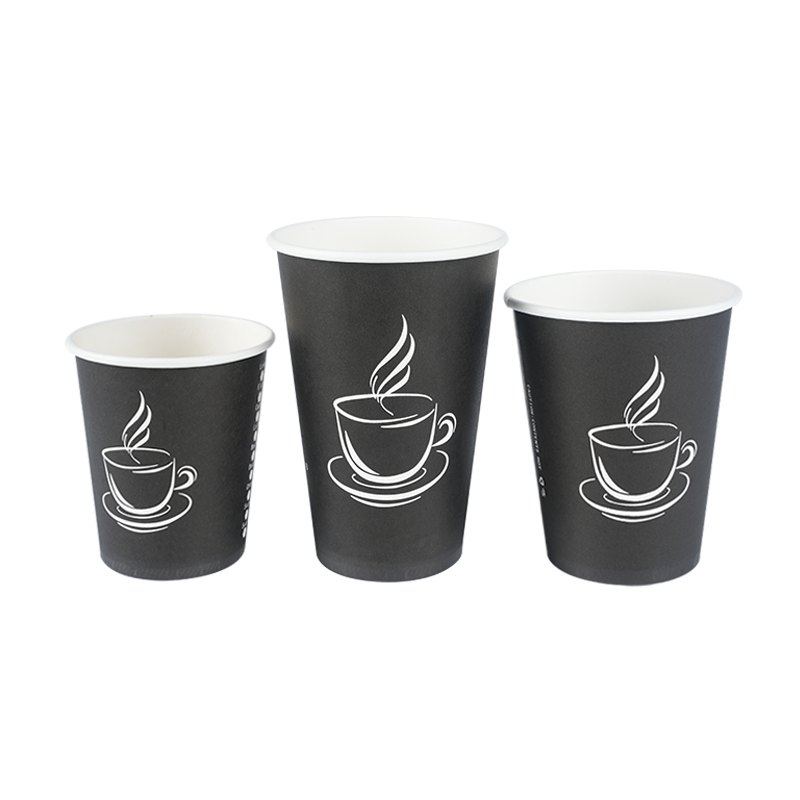PE paper cups are widely used for serving hot and cold beverages, offering convenience and practicality for both businesses and consumers. These cups are made from paper lined with a thin layer of polyethylene (PE), which provides liquid resistance and durability. In this article, we will explore the features, benefits, environmental considerations, and common uses of PE paper cups while providing useful insights for those looking to make informed choices.
What Are PE Paper Cups?
PE paper cups are disposable cups made from paperboard with a PE coating on the inner surface. This coating prevents liquids from seeping through the paper, making them ideal for holding beverages like coffee, tea, soft drinks, and even soups.
Key Features of PE Paper Cups
- Leak-proof – The PE layer ensures no liquid penetration.
- Heat-resistant – Suitable for hot drinks up to a certain temperature.
- Lightweight and portable – Easy to carry and dispose of.
- Customizable – Can be printed with logos or designs for branding.
Types of PE Paper Cups
PE paper cups come in different sizes and designs based on their intended use. Below is a table summarizing common types:
| Type | Common Uses | Capacity (oz) |
| Single-wall PE cup | Cold beverages, water, soda | 8, 12, 16, 20 |
| Double-wall PE cup | Hot drinks (coffee, tea) | 8, 12, 16 |
| Ripple-wall cup | Improved grip for hot drinks | 8, 12 |
| Ice cream cup | Desserts, frozen treats | 4, 8, 12 |
Benefits of Using PE Paper Cups
1. Convenience
PE paper cups are lightweight and disposable, making them ideal for events, takeaway services, and office use. They eliminate the need for washing and reduce cleanup time.
2. Hygienic
Since they are single-use, PE paper cups minimize the risk of contamination compared to reusable cups that may not be cleaned properly.
3. Cost-Effective
For businesses, bulk purchasing of PE paper cups can be economical, especially when compared to reusable alternatives that require maintenance.
4. Custom Branding Opportunities
Many businesses use printed PE paper cups as a marketing tool, displaying logos or promotional messages.
Environmental Considerations
While PE paper cups are convenient, their environmental impact is a growing concern. Here’s what you should know:
Recyclability Challenges
- The PE coating makes recycling difficult since the plastic layer must be separated from the paper.
- Some specialized recycling facilities can process PE-coated cups, but availability varies by region.
Biodegradable Alternatives
- PLA-coated cups (polylactic acid) are a compostable alternative to PE-coated cups.
- Water-based coatings are emerging as more eco-friendly options.
Proper Disposal Tips
- Check local recycling guidelines before disposing of PE paper cups.
- If composting facilities are available, consider switching to PLA-coated cups.

Common Uses of PE Paper Cups
PE paper cups serve various purposes across different industries:
1. Food and Beverage Industry
- Coffee shops and cafes use them for takeaway drinks.
- Fast-food restaurants serve soft drinks and shakes in PE cups.
2. Corporate and Events
- Offices provide them at water coolers.
- Parties and gatherings use them for beverages.
3. Healthcare and Institutions
- Hospitals and schools use disposable cups for hygiene.
How to Choose the Right PE Paper Cup
When selecting PE paper cups, consider the following factors:
| Factor | Consideration |
| Size | Choose based on beverage volume (e.g., 8 oz for espresso, 16 oz for iced coffee). |
| Wall thickness | Double-wall cups provide better insulation for hot drinks. |
| Lid compatibility | Ensure the cup fits standard lids if needed. |
| Printing options | Select blank or custom-printed cups based on branding needs. |
PE Paper Cups vs. Other Materials
| Material | Pros | Cons |
| PE Paper Cups | Affordable, lightweight, customizable | Limited recyclability |
| PLA Cups | Compostable, eco-friendly | More expensive, requires industrial composting |
| Plastic Cups | Durable, reusable options available | Environmental concerns, non-biodegradable |
| Glass Cups | Reusable, eco-friendly | Heavy, breakable, not suitable for takeaway |
Frequently Asked Questions (FAQs)
1. Are PE paper cups microwave-safe?
Most PE-coated cups are not microwave-safe due to the risk of melting the plastic layer. Always check the manufacturer’s guidelines.
2. Can PE paper cups hold boiling water?
They can handle hot liquids, but extremely high temperatures (near boiling) may weaken the cup. Double-wall cups offer better heat resistance.
3. How long do PE paper cups take to decompose?
In landfills, PE-coated cups can take decades to break down due to the plastic lining. Compostable alternatives decompose faster under proper conditions.
4. Are PE paper cups safe for health?
Food-grade PE coatings are generally considered safe, but prolonged exposure to very hot liquids may raise concerns.
Conclusion
PE paper cups offer a practical solution for serving beverages in various settings, balancing convenience with functionality. While they are widely used, their environmental impact should be considered, and alternatives like PLA-coated cups may be preferable for sustainability-focused businesses. By understanding the different types, benefits, and disposal methods, consumers and businesses can make informed decisions when choosing disposable cups.
Whether for a coffee shop, office, or event, selecting the right PE paper cup depends on factors like size, insulation needs, and environmental priorities. With the right choice, these cups can meet both practical and ecological requirements effectively.


 English
English 中文简体
中文简体 عربى
عربى









